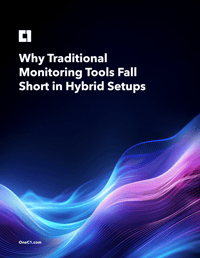Transforming IT Operations with Unified Observability
Accelerate resolutions and optimizeperformance with a single source of truth.
In today’s rapidly evolving digital landscape, organizations increasingly rely on hybrid IT environments that span on-premises data centers, public and private clouds, and edge devices. Traditional monitoring tools, once sufficient for monolithic infrastructures, now struggle to deliver the comprehensive, actionable insights required to manage these complex ecosystems. This white paper explores the limitations of conventional monitoring solutions and outlines how a unified observability platform can transform IT operations, enabling teams to see everything and solve issues faster than ever before.
Key takeaways:
- Fragmented visibility: Traditional tools often operate in silos, leaving critical gaps in data across diverse environments.
- Reactive approach: Conventional monitoring tends to be reactive rather than proactive, resulting in slower incident response times.
- Unified IT observability advantage: By consolidating logs, metrics, traces, and other data sources into a single pane of glass, unified observability platforms empower organizations to resolve issues up to 50% faster.
- Strategic business impact: Enhanced visibility and faster remediation translate into improved uptime, optimized performance, and a competitive edge in the market.
